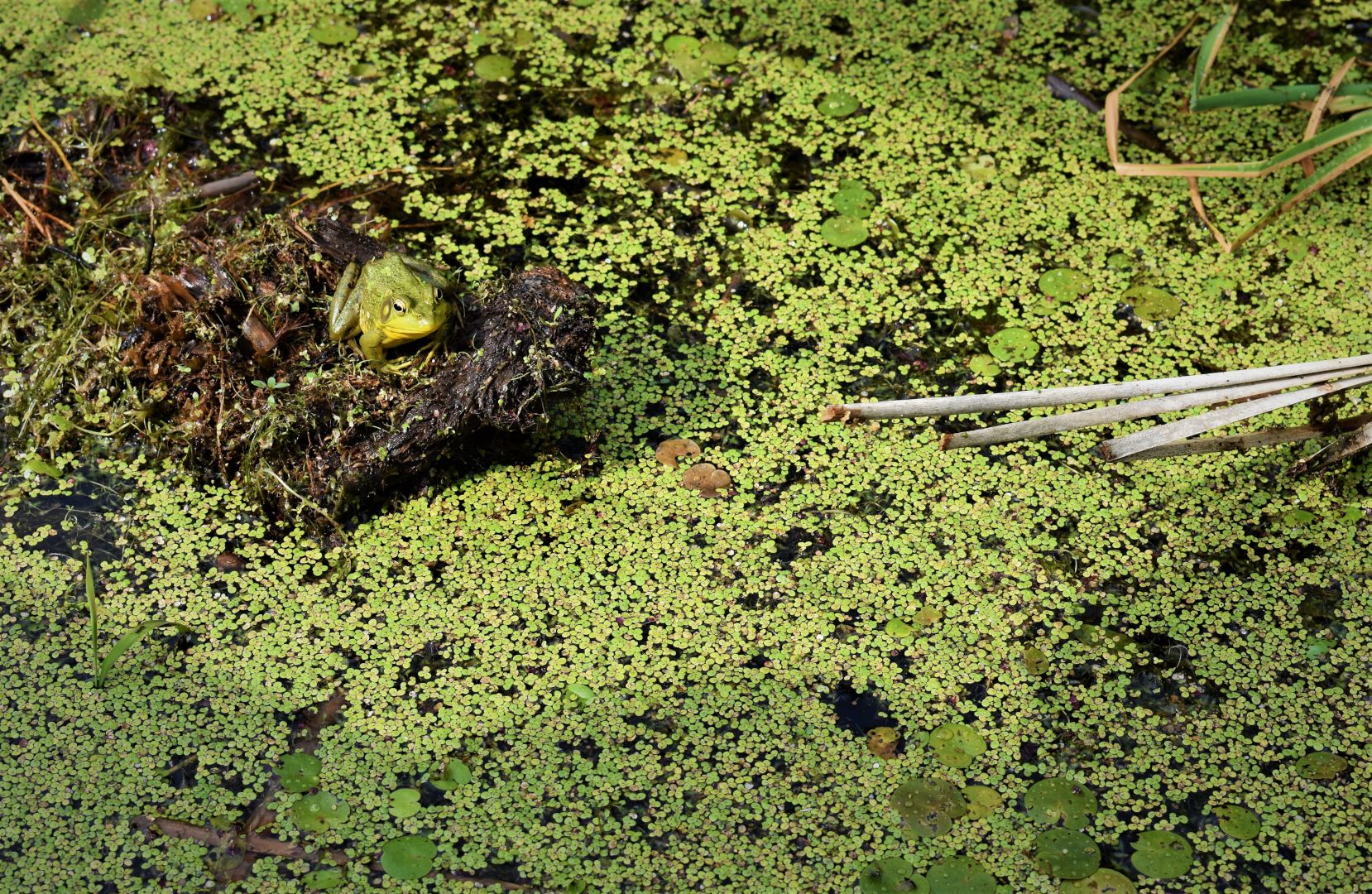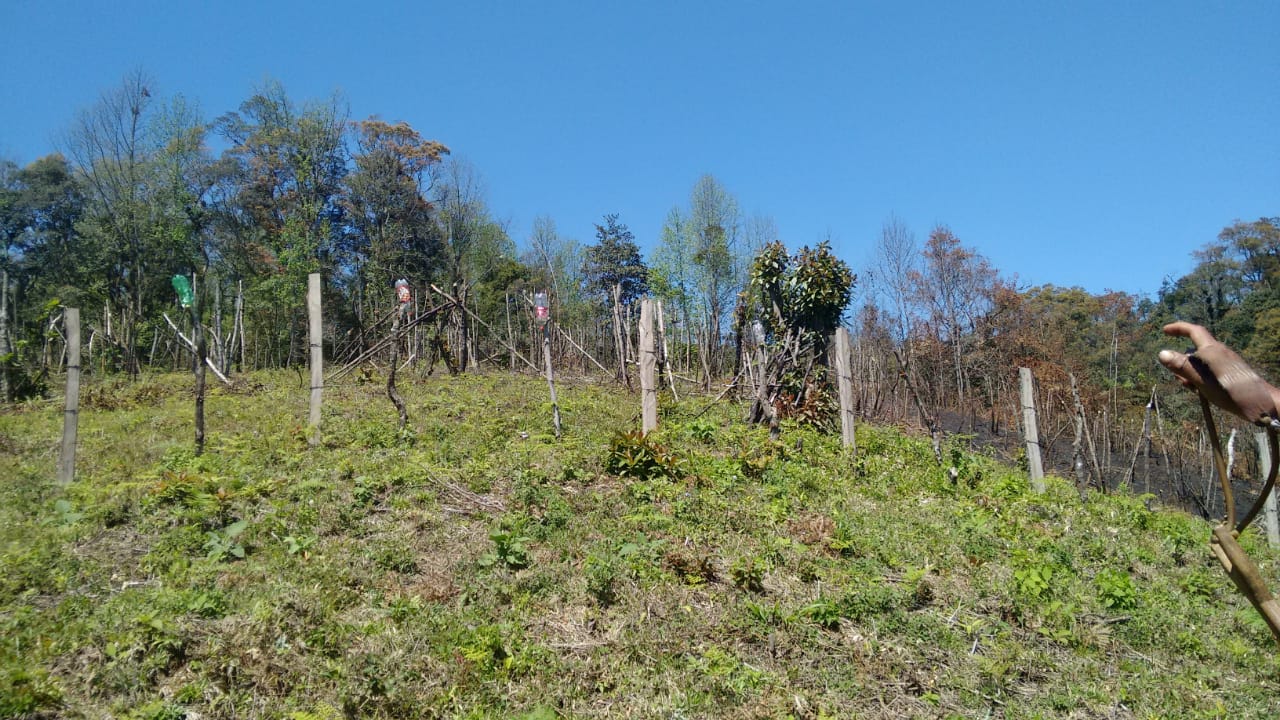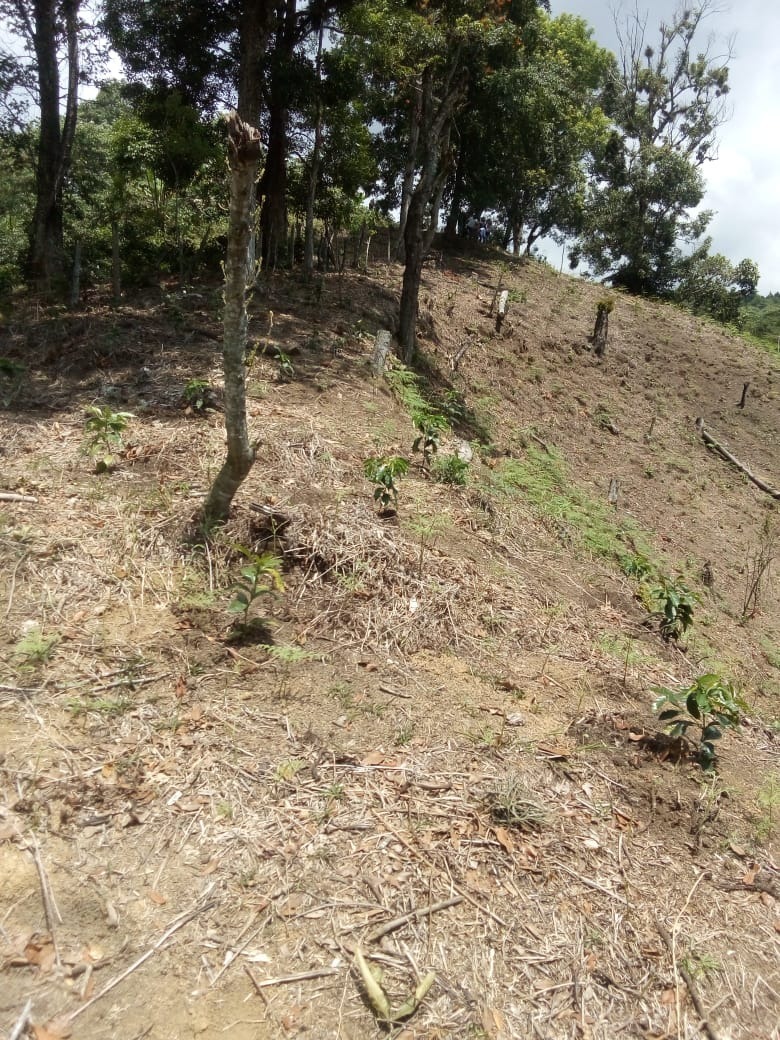
by DGR News Service | Feb 26, 2021 | Biodiversity & Habitat Destruction, Climate Change, The Problem: Civilization
This article was written by Morgan Erickson-Davis.
Morgan describes how biodiverse wetlands are, she asserts we need a change in law to restore them begin to look after and to recreate balance between people, wetlands and biodiversity.
By Morgan Erickson-Davis
- Wetlands provide many benefits to ecological and human communities alike, from nutrients and nurseries to flood control and climate change mitigation.
- However, as much as 87% of the world’s wetlands has been lost over the past 300 years, with much of this loss happening after 1900.
- In response, nations banded together and in 1971 ratified the Ramsar Convention on Wetlands, an intergovernmental treaty designed to facilitate wetland conservation and sustainable use around the world.
- But 50 years on, researchers say the convention has not led to effective protection and wetlands continue to blink out.
Swamps, sloughs, marshes, bogs, fens; water purification, flood control, wildlife nurseries, nutrient providers, carbon sinks: wetlands have many names and serve many environmental purposes. But for centuries they have been viewed simply as hindrances to human development, obstacles to drain and dredge to make room for progress.
Few have escaped this pressure.
Research indicates the world may have lost as much as 87% of its wetlands over the past 300 years, with much of this loss happening after 1900. But in the mid-20th century scientists started grasping just how ecologically – and economically – important wetlands are, and the global environmental community rushed to protect those that still remained.
The result was the Ramsar Convention on Wetlands, an intergovernmental treaty designed to facilitate wetland conservation and sustainable use around the world. Named after Ramsar, Iran, where it was first signed in 1971, the convention today protects 2,413 wetlands encompassing some 2.55 million square kilometers (985,000 sq mi) and has been ratified by 170 countries.
And yet, wetlands are still disappearing. In an article published in the journal Nature earlier this month, researchers Peter Bridgewater at the University of Canberra and Rakhyun Kim at Utrecht University say the convention has not been the protective force it was intended to be.
“Over the 50-year lifetime of the convention, at least 35 percent of wetlands globally have been lost,” Bridgewater and Kim said in a press release.
That number was revealed during the Ramsar Convention’s first-ever Global Wetland Outlook in 2018, which also found that the world’s wetlands were disappearing three times faster than its forests. According to the outlook, the major driving forces behind wetlands loss are climate change, population increase, urbanization and changing consumption patterns like shifts towards a more meat-heavy diet, which requires the clearing and cultivation of larger areas of land.
In addition to supplying vital habitat and “biological supermarkets” for wildlife, wetlands provide important ecosystem services for human communities around the world. They reduce the likelihood of flooding by soaking up excess water from swollen rivers, they filter pollutants from groundwater before it enters aquifers, and they are one of the most effective natural carbon storage systems on the planet. According to the Ramsar Scientific and Technical Review Panel, wetlands store 35% of the world’s land-based carbon – despite covering just 9% of the its surface.
“Without wetlands, the global agenda on sustainable development will not be achieved,” said Martha Rojas Urrego, Secretary General of the Ramsar Convention on Wetlands, in a statement. “We need urgent collective action to reverse trends on wetland loss and degradation, and secure both the future of wetlands and our own at the same time.”
In their article, Bridgewater and Kim acknowledge the Ramsar convention has achieved positive results such as increasing awareness and attracting membership of most of the world’s nations, as well as establishing a global network of Wetlands of International Importance. However, they say it is not really working as intended.
“One of its major flaws is the Ramsar’s site-based approach,” they said, referring to the convention’s focus on identifying and protecting individual wetlands. All too often this protection exists only on paper, Bridgewater and Kim say, explaining that there is generally little on-the-ground change when a site is officially demarcated as a Wetland of International Importance.
“Clearly, expanding the Ramsar list has not been sufficient to improve the conservation status of wetlands,” they write, “although its absence may likely have produced even worse results for wetland conservation.”
To truly protect the world’s wetlands, Bridgewater and Kim say the convention needs to better connect with other global conservation schemes, shift its focus from simply collecting sites to ensuring that those already established are more effectively managed, and implement a more holistic understanding of wetland ecology and hydrology that considers the influence of the surrounding landscape.
“Some structural change in governance and implementation mechanisms is necessary,” they write. “Only more adaptive and dynamic global governance mechanisms will help take global decisions through to implementation and action locally, nationally and regionally; restoring the balance needed between people, wetlands and the rest of their biodiversity in the Anthropocene.”
This article was written by Morgan Erickson-Davis and originally published on Mongabay on 13th February 2021. You can read the original here.
<
Citation: Bridgewater, P., Kim, R.E. The Ramsar Convention on Wetlands at 50. Nat Ecol Evol (2021). https://doi.org/10.1038/s41559-021-01392-5

by DGR News Service | Nov 16, 2020 | Biodiversity & Habitat Destruction
by Blake Lavia and Tzintzun Aguilar-Izzo / Talking Wings Collective
Oct 9th, 2020, Movimiento por la Defensa de la Sierra, Coatepec, Veracruz, Mexico
Five thousand acres of cloud forest are currently being threatened in Coatepec, Veracruz, Mexico. This land is, at present, being held by squatters, who, with the backing of local politicians, have claimed to be the forest’s rightful owners. They displaced dozens of families and are threatening one of Mexico’s most vital ecosystems. These 5,000 acres of land contain three municipal parks and one archeological site. While the land’s original stewards and forest protectors are engaged in a legal battle with the “invaders,” the deforestation of this fragile ecosystem has already commenced. This act of environmental devastation has wide political/economic ramifications. If you control Coatepec’s mountains, you control the subsistence and livelihood of millions.
The Coatepec Cloud Forest
The cloud forest above Coatepec is known as “la fabrica de agua” (the water factory). It is one of the last “water factories” of its kind in Mexico, and it moderates the weather of the entire region. The clouds that roll in from the Gulf of Mexico are captured by the forest canopy, the moisture forming a thick mist that shrouds the mountainside. Trees, moss, and orchids collaborate in an infinitely diverse ecosystem to retain the water that feed the region’s rivers, bringing life to the valleys bellow. The cities of Coatepec, Xalapa, and Cardel rely on this water, not to mention most of the communities of central Veracruz.
Globally, cloud forests are bastions of biodiversity. They harbor animal, and plant that are threatened by the shifting tides of the climate crises and uncontrolled land use. Coatepec’s cloud forest now hosts 90 plant, animal, and fungal species on the verge of extinction. Coupled with the biodiversity loss, the destruction of this ecosystem holds serious repercussions for the entire watershed. Without the cloud forest, the rivers will run dry, and the entire region will see considerably less rainfall. In short, the destruction of the cloud forest will spell drought and devastation for all.
The Invasion
In January 2019, a faction of the “Central Independiente de Obreros Agrícolas y Campesinos” (The Independent Organization of Agricultural Laborers and Farmers) set up an encampment on the 2,000 acres of cloud forest known as the Jinicuil Manso estate. CIOAC verbally threatened more than 500 original stewards of the land and claimed to be the legal owner of the property. While the information is difficult to corroborate, local activist networks say that the organizers of the CIOAC encampment came from outside the region, and do not hold legal rights to the said property. The community members who own land in the Jinicuil Manso estate submitted complaints to the local authorities. While the government “invited” the squatters to move off the premises, they requested that the community members refrain from engaging directly with CIOAC, to prevent physical aggression.
The situation was further complicated in February 2020, when the local authorities issued a “measurement and demarcation notice,” requesting that all the landowners submit paperwork confirming their title to the land. Many of the land’s stewards were not aware of the government’s decree. Others did not have the paperwork to prove that they owned their properties, even though the land had been in their family for generations. The local government never specified the reasons for this “demarcation notice,” and never compared the documents submitted by the land’s stewards with those provided by CIOAC. Instead, they refused to consider the documents submitted, and appear to favor CIOAC’s land claim, a land claim that local activists argue has been falsified.

The Electoral Politics of Water and Land
The local community groups, such as “Por la Defensa de la Sierra de Coatepec,” and the individual landowners, are currently involved in court cases with CIOAC. Throughout the process, it has it became clear the larger political forces are involved in the illegal “settlement” of the cloud forest. The CIOAC members have direct connection with major political parties in the area, with whom they have garnered ample political support. In addition, they have publicly thanked the governor of the State of Veracruz, Cuitlahuac García Jiménez, for his backing (though it is unclear whether this was just political posturing on the part of CIOAC).
Land, environmental destruction, and electoral politics has been devastatingly intertwined in Mexico for decades. When CIOAC first “invaded” the cloud forest, they invited citizens from the surrounding regions to squat on the appropriated land. Community members who did not own land of their own, and/or were seeking greater financial stability, settled in the cloud forest. Forest protectors have observed between 100 to 300 community members in the encampments at a time. They cut down trees, hunt the local fauna, and set up their septic systems to run off into the precious streams. When forest protectors attempt to plant trees or talk with the squatters, the squatters respond violently. They have been known to brandish guns and machetes, defending the land that has been promised to them.
Political figures from various parties in the region have sought to partner with the CIOAC settlers, nurturing a solid voting block of support. Leading up to the future regional and national elections, the ruling political parties have reacted favorably to the CIOAC’s land claims. However, underneath the surface, the forest protectors and activists claim that there is an even darker story. The people that live in the encampments of Jinicuil Manso could also be serving as a human shield, emptying the land for a larger economic interest that seeks to control the most vital resource of all: water.
The Conquest of the Cloud Forest
While at first glance the squatters could appear to be land hungry farmers, they are in fact just a cog in the virulent political system. Local activists believe that the squatters could be a facade for a political and economic interest that seeks to take over the forest of the region. Nestle, Coca-Cola, and other international corporations have huge factories in Coatepec, and have been seeking to control the region’s water supply for decades. Over the last series of elections, the community members have seen this same political/environmental ploy play out, though not to this level of devastation.
Veracruz is one the deadliest regions for land and water protectors in the world. “Por la Defensa de la Sierra de Coatepec” continues to organize throughout the region, raising awareness about the plight of the cloud forest, and the people that have been displaced. However, the settlers began threatening the lives of the forest protectors. When the organizers tried to negotiate with them in person, they were attacked with machetes. In the end, the CIAOC managed to scare most of the forest protectors into silence by actively threatening their families, while local authorities have turned a blind eye.
Action
While many forest protectors are too afraid to speak in public or to the press, the fight is not over. On the 29th of November 2020, “Por la Defensa de la Sierra de Coatepec” will return to the stolen land to begin reforesting the trees that have been cut down. They will also initiate a barter market with the local community members who have been directly affected by the theft of land. While many forest protectors have been forced to move to surrounding cities to protect their families, they are willing to risk their lives to defend and bring life back to the cloud forest.
How You Can help!
– Follow the “Movimiento por la Defensa de la Sierra” on social media and share the story with everyone you know.
– Show your support by commenting on their page, and/or sharing a video of support.

by DGR News Service | Nov 15, 2020 | Strategy & Analysis
In this piece, originally published in Counterpunch, George Wuerthner examines previous successful conservation movements, and describes what we can learn from them.
We do not want those whose first impulse is to compromise. We want no straddlers, for, in the past, they have surrendered too much good wilderness and primeval areas which should never have been lost.
– Bob Marshall on the founding of the Wilderness Society
By George Wuerthner / Counterpunch
There is an unfortunate tendency on the part of conservationists to forget or ignore history. A greater appreciation of past conservation victories as well as defeats can inform current efforts. In far too many cases, there is a tendency to believe that it is necessary to appease local interests typically by agreeing to weakened protections or resource giveaways to garner the required political support for a successful conservation effort. However, this fails to consider that in nearly all cases where effective protective measures are enacted, it has been done over almost uniform local opposition.
In those instances where local opposition to a conservation measure is mild or does not exist, it probably means the proposal will be ineffective or worse—even set real conservation backward.
Nevertheless, many environmentalists now believe that due to regional parochialism and lack of historical context, significant compromises are necessary to win approval for new conservation initiatives.
These compromises demonstrate a failure to learn the lessons from conservation history. In particular, it is striking that in today’s era of greater environmental awareness, many environmentalists are willing to propose compromises that offer far weaker protections for our public lands heritage than what was accomplished decades ago, when resource extraction industries had a much greater influence over local and regional economies.
LESSON ONE: Nearly all worthwhile conservation successes were established over strong local objections. This opposition is not surprising. Current land users have a vested interest in maintaining the status quo. Though environmental protection has been shown repeatedly to provide long term economic and social benefits to regions, those who benefit are often different from those who have a vested interest in maintaining the status quo. We nearly always hear that protection will ruin the local economy.
Thus Yellowstone National Park was created by Congress mainly over the opposition of locals in Montana Territory, who wanted the park to remain open to homesteading, logging, and ranching. Indeed, annually for twenty years after establishing the park, Montana’s Congressional representatives introduced bills into Congress to undesignate the park. Fortunately, due to strong support for the park from the “dreaded eastern establishment,” these efforts did not succeed.
Similarly, when Franklin Roosevelt established Grand Teton National Monument in 1943, Jackson’s local leaders declared that Jackson would become a “ghost town,” and Wyoming’s Congressional delegation introduced a bill to eliminate the park. The bill successfully passed both branches of Congress. The monument only survived because Franklin Roosevelt vetoed the bill.
Early efforts to create a park in the Olympic Mountains with the first park bill were introduced in 1904—a statement that was vigorously opposed by local timber interests. Teddy Roosevelt responded and established the Olympic National Monument in 1907 and put vast tracts of virgin timber off-limits to logging when logging was king.
Nevertheless, opposition from logging interests continued. However, in 1938 outside interests lead to the establishment of Olympic National Park. In the long run, the park’s creation has been shown to have substantial long-term benefits to the residents of the Olympic Peninsula. However, those who made their living by cutting down the Olympic Peninsula trees are not necessarily the same people who are now making a living from the park’s scenic, ecological, and tourism values.
LESSON TWO: Don’t assume all locals are opposed. Typically the most vocal opponents are those with the largest vested interest in maintaining the status quo. There may even be a “silent majority” that is at least neutral or mildly supportive of your proposal, but they are not the ones who control the local politics. However, whether one or many local supporters, nearly all successful conservation efforts rely upon outside leadership to issue a state or national concern. And there is usually some visionary (or group of visionaries) that led this national campaign ala John Muir (Yosemite), David Brower (Dinosaur), Bob Marshall (Gates of the Arctic), Olaus Murie (Arctic Wildlife Refuge), Willard Van Name, Rosalie Edge, and Irving Brant (Olympic), George Dorr (Acadia), etc.
LESSON THREE: Creating and generating the political case for strong conservation protection, as opposed to more limited or weak gains, often takes a while, sometimes a long time. For instance, in the 1930s, Bob Marshall publicly called for protecting all of the Brooks Range north of the Yukon River as a national park. It took until the 1980s for his vision to become a reality. Look at a map of northern Alaska. You will see that nearly the entire Brooks Range is now in some protected status between national wildlife refuges, national preserves, and national parks.
LESSON FOUR: Pragmatists, in the end, leave messes for future generations to clean up. Capitulating to local interests with half-baked compromises in the interest of expediency typically produces uneven results. Either they do not adequately protect the land or create enormous headaches for future conservationists to undue often at a significant political and economic expense.
For instance, when the national forest system was first established, the lands were protected from commercial uses, much like our current national parks. However, in 1905, Gifford Pinchot proposed expanding this system of national forest reserves into national forests, opposition to the forest system from mining companies who wished to use timber from national forests for mining timbers and other mine construction lead to a compromise that permitted commercial logging. Some conservationists like John Muir were opposed to this compromise, but they lost in their efforts. Others felt that a compromise was needed, and besides, it was reasoned such a compromise would be harmless because most of the best timber was outside of the forest preserves and on private lands. No one could imagine there would be much demand for logging on national forest lands.
A similar compromise was also made regarding commercial livestock grazing to win over western ranchers. So commercial logging and ranching were put in place to neutralize western opposition to the forests—but we are still paying the price for that decision today.
Another example is Lake Tahoe—the gem of the Sierras. Initially, there was a movement to protect the lake as a national park. But in the interest of expediency and due to local opposition that wanted to log the great pine forests surrounding the lake, the park proposal was dropped in favor of national forest status. Today many of the problems that plague the Tahoe basin, including water quality decline, are a consequence of this decision, including the abundance of private lands (which could be settled within national forests but not parks).
Point Reyes National Seashore represents another example. The park was created by the purchase of private ranchlands on the Point Reyes Peninsula. As a compromise, any rancher that wanted to remain on their former property and continue ranching/farming was given a 25 year grace period, after which they would be required to leave the property. Almost immediately, the ranchers began to lobby to extend the grace period. Today, fifty years later, they are still operating on the public lands and damaging the water, wildlife, and plant life of the peninsula. Had the Park Service and Congress done what any other property owner does upon purchasing land, which is to pay for the land and have the former owners leave, we would not be facing the prospect of another 20 years of livestock production on these parklands.
We’ll never know whether these compromises were necessary. One could argue that we would not have any national forests today if we had not made such compromises, but this is mostly conjectures. National support for parks and other preserves was very high, and it is likely national forests without logging and grazing would have won Congressional approval.
LESSON FIVE: Over time, most locals view conservation areas as an asset and source of pride. This change typically takes a couple of decades, but I know of no exceptions. Despite this realization that any particular park, wilderness, etc. is overall a benefit to the local and regional society does not typically result in local support for new conservation proposals as they come along. In other words, though people in Montana have grown to love Yellowstone National Park, there was still stiff local opposition to new wilderness areas adjacent to Yellowstone National Park like the Absaroka Beartooth Wilderness when it was created in 1978.
To illustrate one example, I will highlight the chief milestones along the way towards today’s Grand Canyon National Park.
GRAND CANYON
1882. Senator Harrison (later president) introduces three proposals for a Grand Canyon National Park into Congress without success.
1883. Harrison, elected president, creates 15 forest preserves, including one surrounding the Grand Canyon.
1898. Coconino County Board of Supervisors passes resolution opposing new forest preserve—and attempts to have protections lifted.
1903. Teddy Roosevelt visits the canyon.
1906. Roosevelt signs a bill to create a large game range at canyon again over local opposition.
1908. Roosevelt asks his attorney general whether there was any limit on the size of areas that could be protected using the recently passed Antiquities Act (1906). The Act was created to protect “small” sites like Indian ruins. However, according to the attorney general, no size limit exists—so Roosevelt uses the Antiquities Act to create a million-acre Grand Canyon National Monument.
Residents in Arizona were outraged. Arizona’s congressional delegation succeeded in blocking all funding for the implementation of monument protection. They sued the federal government and went all the way to the Supreme Court. They argued that Roosevelt exceeded his powers and the original intention of the Antiquities Act. Supreme Court upholds the use of the Antiquities Act, and Grand Canyon National Monument remains.
Failing to eliminate the monument, opponents took a new tact—like Healthy Forests Initiative—they used the conservationists’ language to hide their real intent—to undercut protection. Knowing the national popular support for parks, in 1917, Arizona Senator Henry Ashurst introduced a bill to make the Grand Canyon a national park.
1919. Grand Canyon NP was signed into law—but freed up much of the valuable mining, timber, and grazing lands to satisfy local interests. The bill removed monument and park protection to grazing and timberlands, reducing the overall acreage protected by the national monument by 2/3!
1927. Growing popular support for parks and the Grand Canyon lead to the expansion of Park boundaries to 646,000 acres.
1932 Herbert Hoover declared a new Grand Canyon NM to protect an additional 273,000 more acres surrounding the existing national park.
1969. Marble Canyon NM was created.
1975. Grand Canyon Enlargement Act adds Marble Canyon and Grand Canyon NM to the existing Grand Canyon National Park. Creating a park of 1.1 million acres that finally equals in size the original national monument that Roosevelt had protected in 1908.
1979. UNESCO declares Grand Canyon, an official World Heritage Site.
In the 1990s, when federal budget issues threatened to close the park to visitors, the state of Arizona offered to pay rangers salaries to keep the park open—illustrating the complete change in attitude that now prevails.
2000 President Clinton designates just over 1 million acres as the Grand Canyon-Parashant National Monument to protect much of the North Rim region of the canyon over locals’ objection. I predict that someday these lands will be added to Grand Canyon National Park.
Conclusion
The most important lesson is not to be discouraged when local people do not widely hold your idea for conservation protection. This should not prompt an immediate compromise to whatever legislation or goal you are pursuing. Instead, stick to the plan, and in many instances, you will prevail. Try to neutralize local opposition, but generate outside support if possible, make the issue a state or national issue.
For instance, it was downstate supporters in New York City that provided the political muscle to create the Adirondack State Park over residents’ objections. This park, now 6 million acres in size, has a clause that prohibits all logging on state lands. If early park advocates had tried to mollify locals to accept park establishment, there would have undoubtedly been logging permitted in the new park. Instead, park supporters successfully rallied people from outside the region to help create the wilderness park we have today.
All legislation is compromise, but don’t be the one to do the compromising—that’s the job of Congress. Make your best case for the best protection. If you don’t achieve that goal in any particular legislation, you can decide to oppose it and attempt to stop it or accept it with compromises. For instance, if you want all the roadless country in a particular area designated as wilderness, propose it all as wilderness and make your best case to save it all. If Congress cuts that in half, you have still successfully made the case that all the roadless lands are qualified for wilderness, and you can always try to enact more protective legislation in the future for these lands. However, if in attempting to secure local support, you automatically say or accept the notion that some of these roadless lands are ecologically unimportant or are throw away lands that can be developed; you have lost your moral authority to fight for protection later.
When and where you compromise affects the outcome, not only current issues but shaped future expectations. Thus a long-term vision should always be kept in mind.
George Wuerthner has published 36 books including Wildfire: A Century of Failed Forest Policy. He serves on the board of the Western Watersheds Project. You can read the original article here.



![[Green Flame] Industrial Solar is Destroying the Mojave Desert](https://dgrnewsservice.org/wp-content/uploads/sites/18/2020/09/green-flame-NS.jpg)


